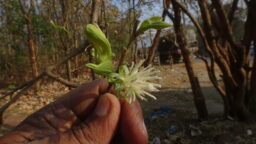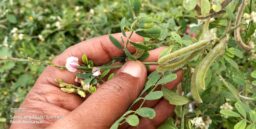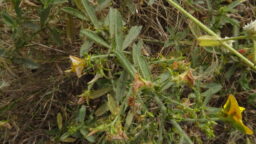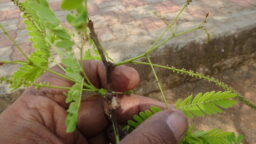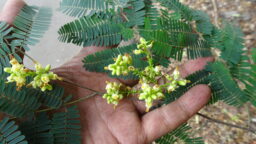
Common Name: Sage leaved alangium. Tamil Name: Alanji
Sage leaved alangium is a tree which grows to a height of about 10 meters and has wide distribution all over India. The tree is commonly seen in Tamilnadu along roadsides and near water bodies. It has an ash colored bark with some shallow fissures. It is a deciduous tree and is seen leafless and in full bloom during the months of February and March. The leaves are simple and arranged in an alternative manner. The leaf size is highly variable. The leaf stalk and leaf length is around 1.1 cm and 9 cm respectively. The leaf is elliptic in shape and has an oblique base and acute apex. The leaf nerves are prominently exposed on the under surface of the leaf. The flowers are axillary cymes, fragment and whitish-green in color. The corolla segments (8nos) are lancelolate in shape and curled backwards and measure around 2.2 cm each. The stamens number stands around 24 numbers. The fruit is in the form of a spherical one seeded berry which turns from violet to purple when fully ripe. This tree can be seen in Kallar, at the foothills of Nilgirs, but not seen in the higher altitudes. Sage leaved alangium has several medicinal applications; all parts of the plant are used in traditional Indian systems of medicine. The fruit is edible, often consumed by village folks. The tree attracts considerable amount of bird and insect species. It is the larval host plant for Hawk moth.

